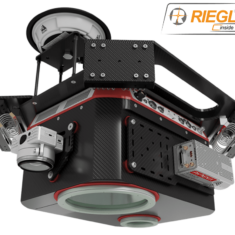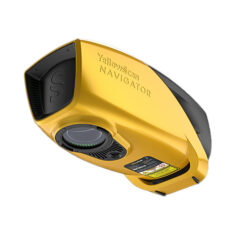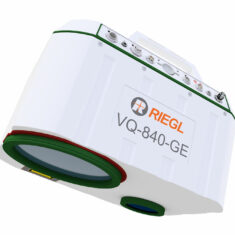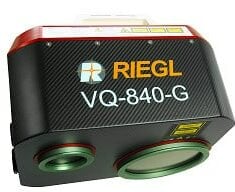Bathymetric LiDAR Sensors for Drones
Bathymetric LiDAR sensors, which are used for hydrographic applications to survey coastlines and shallow waters, output laser light using the green wavelength of 532 nm, requiring a higher power which means a lower pulse rate and fewer measurements per second.
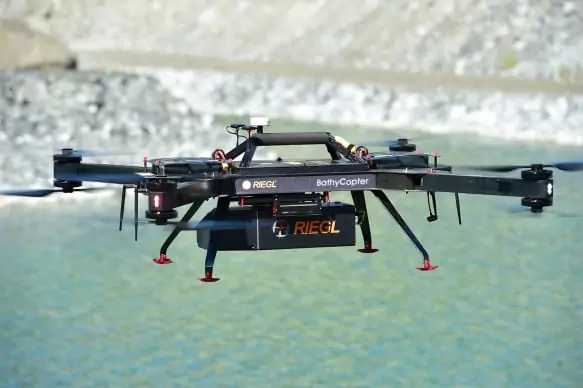
Riegl BathyCopter – Bathymetric Survey LiDAR Drone
Bathymetric LiDAR drones fly lower than topographical LiDAR UAVs due to the differing laser powers and attenuations in water and air. Bathymetric LiDAR systems are typically heavier and so require heavy-lift multirotor drones to carry them.
UAV LiDAR bathymetry is used in coastal surveys to characterize the land and seafloor, for environmental monitoring and coastal reef mapping, to gather data for flood simulations, and in a wide variety of other applications.
Subsea LiDAR for AUVs & ROVs
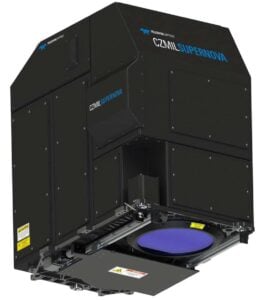
CZMIL SuperNova Bathymetric LiDAR by Teledyne Geospatial
Underwater LiDAR scanners can also be installed on AUVs (autonomous underwater vehicles) and ROVs (remotely operated vehicles). LiDAR payloads may be installed into AUVs via custom integrations, and pre-integrated skids are available that can be easily installed into ROVs.
Although LiDAR cannot travel as far underwater as sonar beams, it can provide a greater resolution than sonar-based scanning. The two technologies may be used in conjunction, with multibeam sonar being used to detect potential targets over wide areas and LiDAR being used to capture detailed 3D data.
Underwater LiDAR Applications
Subsea LiDAR scanners are used for a wide range of surveying applications, such as offshore oil and gas fields, underwater topography and coral reefs. They may also be used for underwater archaeology to scan and reconstruct shipwrecks and underwater ruins.
Underwater LiDAR can also be used to detect hazards such as mines and unexploded ordnance, as well as gas leaks in pipelines and damage to underwater structures.







